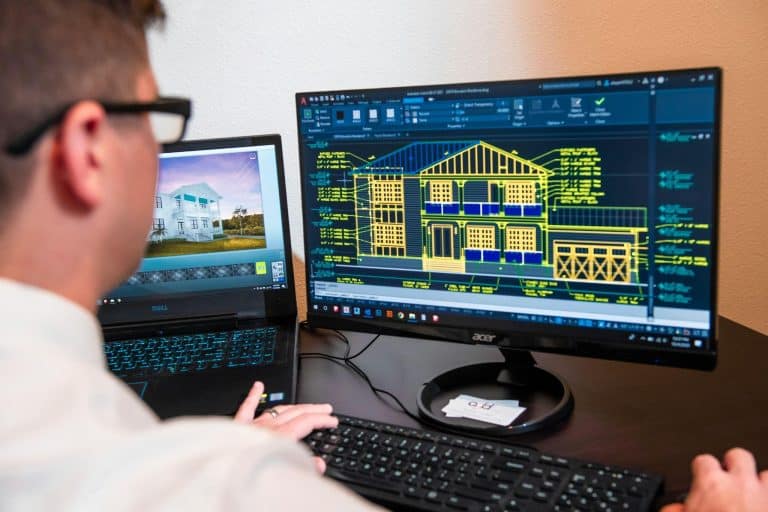Construction sites today need more than grit and gear; they need brains behind the build. Smart tools enhance the hard work on-site, making every hour more productive. As crews juggle tighter timelines and client expectations, the ability to plan, adapt, and communicate digitally has gone from a bonus to a baseline.
Software designed for construction doesn’t belong only to massive firms with IT departments. Smaller outfits have just as much to gain, especially when every delay feels personal and every win fuels reputation. With the right digital tools, tasks get clearer, communication tightens, and downtime shrinks. It helps simplify operations and bring order to the day-to-day challenges of the job site.
And with the current labor shortage still affecting the trades, tools that reduce dependency on manual coordination and repetitive admin work are even more valuable. Leveraging software helps your experienced team focus on building, not babysitting logistics. It frees up your best people for the jobs they were trained to do.
In this article, you’ll explore how smart software tools are reshaping construction site management, from improving communication and scheduling to boosting team coordination and client satisfaction.
Benefits of Visualization and Strategy Tools
Ask any site manager: even the best plan falls apart if no one understands it. That’s where visual tools step in. A well-laid diagram lets teams grasp scope, stages, and roles without digging through dense documents or sitting through another long briefing. When everyone, from electricians to general contractors, can see the workflow, misunderstandings drop, and productivity increases.
Using a dynamic diagram maker can outline processes, map safety zones, and align subcontractors to a shared vision. Instead of shuffling through printouts or outdated PDFs, teams can refer to centralized, updated diagrams accessible from their phones or tablets.
Miscommunication over job phases or material placement leads to rework and frustration. But when your strategy is mapped out visually, and each crew member knows what’s coming next, the job flows like it’s supposed to. Everyone’s looking at the same page, literally.
Visual platforms are also a win when onboarding new team members or rotating in subcontractors. They don’t need to memorize complex workflows or ask five people for context. One visual diagram can save hours of explanation and prevent critical errors on-site.
Top Tech Features That Help Construction Teams Work Smarter
On-site chaos used to be the norm. Delays in the morning led to scrambled calls by noon and guesswork by closing time. That’s changed. The best software tools now include features that align crews and managers, even if they’re not standing in the same spot.
The right field management software lets you dispatch workers, monitor assets, and update job progress in real-time. These upgrades deliver real, everyday value on the job site. The best field service management tools help construction teams schedule more efficiently, find equipment quickly, allow seamless mobile access, provide immediate quotes, and confirm job details without returning to the office.
GPS-enabled asset tracking means no more wasted time hunting down gear. Real-time updates let the main office know when tasks are finished or if the weather is holding things up. Mobile-friendly platforms make it easier for supervisors to check status while walking the site or for workers to clock hours with a tap.
Suddenly, meetings become check-ins, not fire drills. You know what’s happening on every corner of the job, and so does your team.
Another advantage? Data collection. Smart software stores time logs, material usage, safety reports, and other documentation in one place. So when it’s time for inspections, billing, or reviewing project profitability, you aren’t scrambling; it’s all right there, searchable and shareable.
Stronger Teams and Happier Clients Through Smart Software Use
Getting your internal systems in sync benefits more than just the office staff. When your software tools speak to each other, your people do. That means fewer dropped handoffs, better morale, and happier clients.
Picture this: A client calls midweek to ask where their project stands. Instead of digging through notes or calling three supervisors, you pull up the latest status update from your job tracking system and give them a real answer. That kind of transparency builds trust fast.
Or consider the field crew, who used to spend half an hour every morning figuring out their assignments. Now, they open their phones, check the updated schedule, and get to work without confusion or delays. Communication platforms that integrate with your project timeline eliminate the need to repeat yourself or re-explain the plan.
A well-connected team stays ahead of issues and builds trust through consistent communication. When everyone has the same information, it’s easier to deliver work you’re proud of, and service your clients remember.
Clients also tend to notice when your team is proactive instead of reactive. Simple touches, like automated updates about schedule changes or weather delays, show clients that their time matters and you’re on top of every moving piece. That level of care turns one-time projects into long-term relationships.
Tech Makes It Happen
While introducing tech to long-existing procedures can be challenging, it’s worth it, and you don’t have to overhaul your operation overnight. Start with one or two systems that solve real problems for your team. Something that shortens your mornings or gives you clearer timelines. Then build from there.
Small steps toward smarter software use can help your company operate like the pros. More and more modern tools are shaping the future of construction, including building information modeling and sustainable building technologies that improve efficiency, reduce waste, and support long-term environmental goals. The goal is clarity, momentum, and ensuring every person on your site has what they need to do the job right.
At the end of the day, construction work runs smoother when tools and teams are aligned. Whether you’re managing a two-week roofing job or a six-month site overhaul, digital coordination makes all the difference. You want fewer bottlenecks and better handoffs. That happens when you stop chasing paperwork and use software supporting your workflow.









